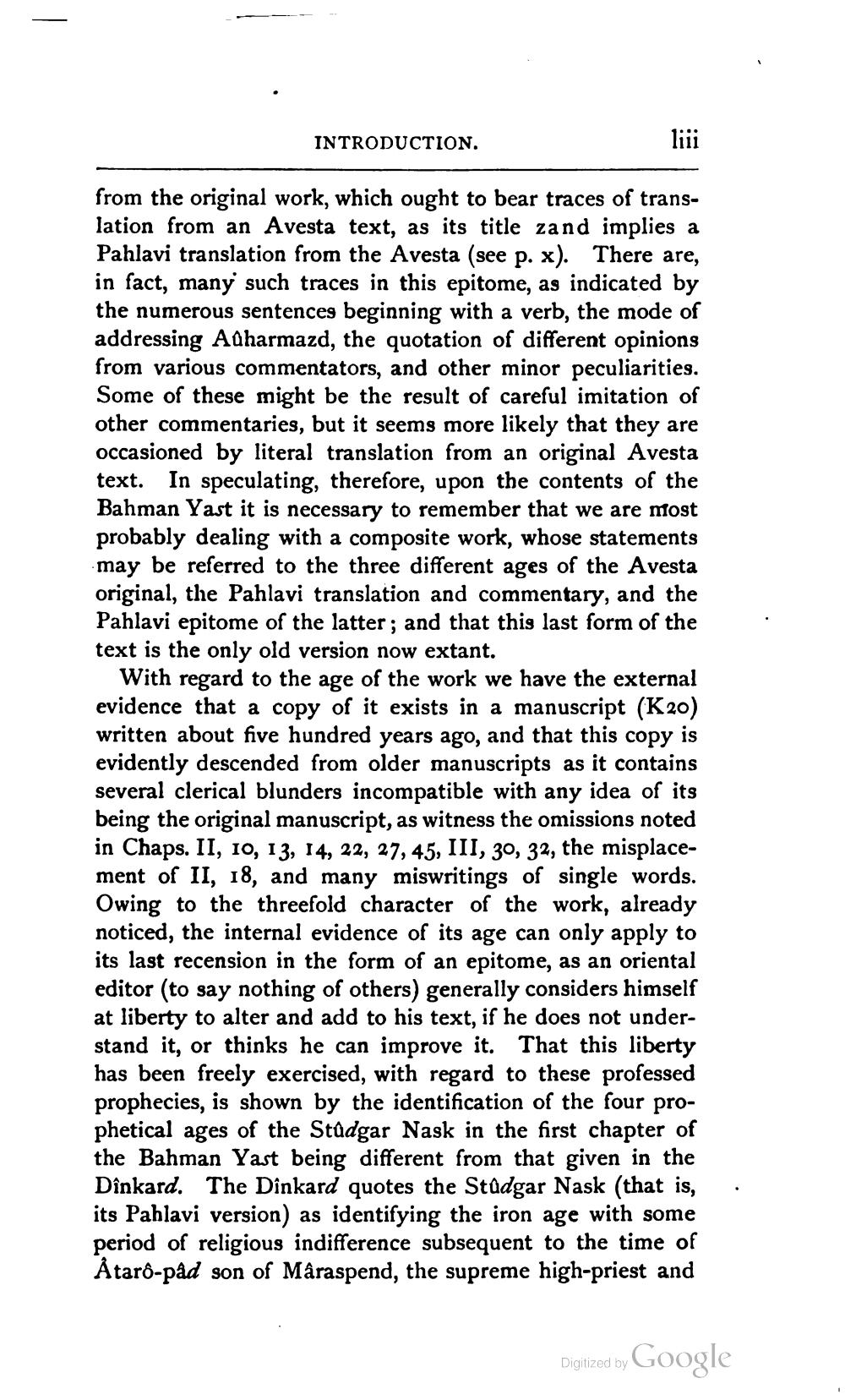________________
INTRODUCTION.
liii
from the original work, which ought to bear traces of translation from an Avesta text, as its title zand implies a Pahlavi translation from the Avesta (see p. x). There are, in fact, many such traces in this epitome, as indicated by the numerous sentences beginning with a verb, the mode of addressing Adharmazd, the quotation of different opinions from various commentators, and other minor peculiarities. Some of these might be the result of careful imitation of other commentaries, but it seems more likely that they are occasioned by literal translation from an original Avesta text. In speculating, therefore, upon the contents of the Bahman Yast it is necessary to remember that we are most probably dealing with a composite work, whose statements may be referred to the three different ages of the Avesta original, the Pahlavi translation and commentary, and the Pahlavi epitome of the latter; and that this last form of the text is the only old version now extant.
With regard to the age of the work we have the external evidence that a copy of it exists in a manuscript (K20) written about five hundred years ago, and that this copy is evidently descended from older manuscripts as it contains several clerical blunders incompatible with any idea of its being the original manuscript, as witness the omissions noted in Chaps. II, 10, 13, 14, 22, 27, 45, III, 30, 32, the misplacement of II, 18, and many miswritings of single words. Owing to the threefold character of the work, already noticed, the internal evidence of its age can only apply to its last recension in the form of an epitome, as an oriental editor (to say nothing of others) generally considers himself at liberty to alter and add to his text, if he does not understand it, or thinks he can improve it. That this liberty has been freely exercised, with regard to these professed prophecies, is shown by the identification of the four prophetical ages of the Stůdgar Nask in the first chapter of the Bahman Yast being different from that given in the Dînkard. The Dinkard quotes the Stadgar Nask (that is, its Pahlavi version) as identifying the iron age with some period of religious indifference subsequent to the time of Åtaro-pad son of Mâraspend, the supreme high-priest and
.
Digitized by
Digitized by Google




